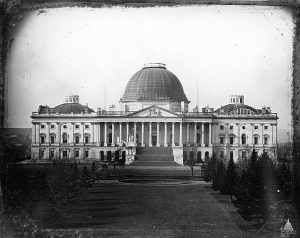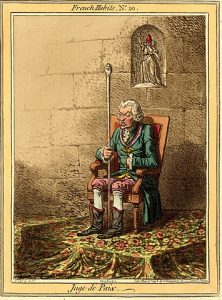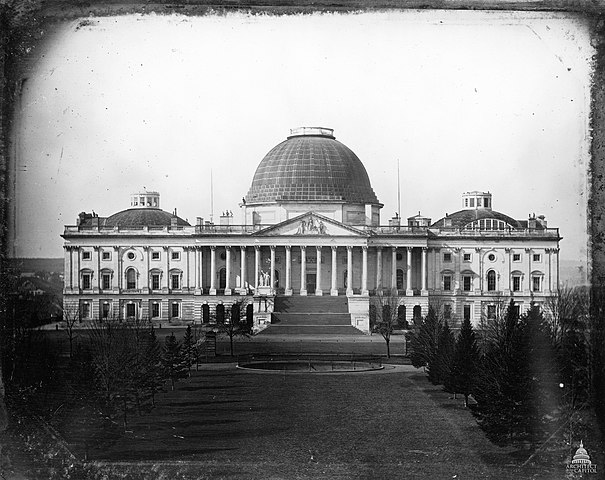

Fight Against Corruption: Shared Principles, Different Practices
15 February 2022
Protect Global Value Chains
17 February 2022by Nicolas Barreyre, EHESS and Claire Lemercier, Center for the Sociology of Organisations (Sciences Po)

Contrasting political life in France to that in the United States is a longstanding tradition in the French political debate: Alexis de Tocqueville (1805-1859) made this contrast central to his book Democracy in America. He believed the vitality of associations and communal assemblies in the United States was the opposite of French individualism, which paradoxically led to statism.
Nearly two centuries later, the United States is still presented as a counter-model to France, which has been portrayed as hyper-centralised and interventionist since Napoleon and even Louis XIV, and as governed by a state that has blanketed the territory with civil servants controlling businesses and civil society. By contrast, the United States is cast as emblematic of deregulated capitalism and associative life, with a deeply rooted distrust of any central administration.
Social scientists have seized on this opposition that permeates the political discourse, and have derived national models from it, in order to explain different historical trajectories. However, when we work to recover how people experienced the state at different times in the past, this opposition does not hold.
It is not simply that things are more nuanced: of course the central state was not totally absent in the United States, and of course becoming a civil servant has not been the eternal aspiration of every French person! More importantly, it means that approaching the state in terms of the national models leads to a historical dead end. This is what we show in our article The Unexceptional State: Rethinking the State in the Nineteenth Century (The American Historical Review, 2021). Basing our analysis largely on recent historiographies, we jointly explore the French and American cases in the first half of the nineteenth century and show that they are far from being opposed. Rather, they are part of a shared repertoire of state forms that characterise a particular historical moment. This historicizing approach to the state, we argue, also helps shed light on current relationships between the central state and local authorities, associations and businesses.
The State in the United States: Really Unique?
Over the past thirty years, there has been renewed interest in the history of the state in the United States. Previously, the nineteenth century was largely seen as an era of a “state of courts and parties”. Recent work has shown the importance of multiple forms of state action. The States exercised extensive “police” powers that could go so far as to prescribe moral behaviour. Through the military, the Federal state orchestrated the violent conquest, exploration, mapping, and development of the West; and the post office, as a national public service, played a major economic, social, and political role. While the pre-1860 U.S. state was powerful and interventionist in some areas, it was not bureaucratic, however. And so, even these most recent studies, which have quite drastically reevaluated the American state, continue to characterise it as fundamentally different from European states, and the French one in particular. It is as if two distinct dynamics were involved.
We engaged in this discussion by raising the question of whether this was true in practice in the first half of the nineteenth century. To explore this, we had to draw on existing publications on both sides of the Atlantic, which involved the delicate challenge of putting in conversation works that do not ask the same questions. But this exercise proved particularly fruitful.
Administrations that work with elites

United States Capitol – 1846 © Architect of the Capitol
First, we discuss the classic opposition between a centralised France and a federal United States. There is no doubt about the constitutional difference: U.S. States had powers that the French departments neither had nor claimed. Discourses on the state in each country reflected that divergence. It is worth noting, however, that there were many advocates of a stronger central state in the United States, while France had strong proponents of decentralisation.
Most importantly, the analysis of administrative practices on the ground reveals that the realities are more mixed. In France, discourse insisting on uniformity across territories did not preclude numerous exceptions (the colonies in particular) and accommodations. The main task of prefects, as representatives of the central power, was to secure minimal consent from mayors and other officials so that measures decided in Paris could at all be implemented. They thus sought to uncover what these elites thought, to pass the information on to the ministries, and negotiated with them. This is not so different from the discussions that took place in the United States when, for example, certain communities objected on religious grounds to the general rule that mail be delivered every day of the week. This local autonomy in administrative practices was widespread in both countries at that time.
A small civil service with blurred boundaries
This situation was the result of both a political choice and a constraint: even French prefects, often presented as the embodiment of a centralising bureaucracy, did not have the means to act alone. To imagine that France was awash in civil servants and public spending is anachronistic. While it is difficult to put a figure on this, we have tried to estimate it. Our results show that, if more people were paid by the state in France than in the United States, it was not due to more bureaucracy in central offices or greater intervention in the economy. For example, until 1905, part of the salaries of Catholic priests, Calvinist and Lutheran ministers, and rabbis were public expenditures, whereas nothing of the sort existed across the Atlantic. There were far fewer central government tax employees in the U.S., where most taxes were levied by the States. Nevertheless, relative to the population of each country, the number of people working for the state was roughly the same in most domains.
What these figures primarily show is the small share of civil servants paid full time by the state and working in either Paris or Washington. Far more people worked for the state, but outside the capitals or, more importantly, without being salaried by the state. The statistics that can be compiled for the mid-19th century mostly exclude clerks considered to be subordinate, many of whom were not paid at all, or were paid out of their bosses’ salaries. On the other hand, they include, and even placed at the centre of the State service, elected representatives, or, in France, non-professional judges (justices of the peace, labor judges, commercial judges). Moreover, even civil servants in the narrower sense were rarely recruited by competitive examination or subject to uniform promotion procedures.
What does and does not fall within the remit of government service was therefore not delineated in ways that may appear to be obvious today, as the boundary between public and private employment only dates back to the beginning of the 20th century. This makes it irrelevant to characterise a state as strong or weak by measuring spending or staff. On the other hand, these forms of organisation, in which many public functions were performed by officials who also exercised other professions (merchants, lawyers, etc.), corresponded to a way of governing based on securing consent, particularly among local elites.
Better describing the overlaps between public and private

Caricature anglaise représentant un parlementaire britannique habillé comme un juge de paix français : un type de juge de proximité tout récemment créé (1798) © The Trustees of the British Museum, CC BY-NC-SA 4.0
For the nineteenth century, it is thus probably useless to try to measure the size of the state as if it were a distinct object with well-defined boundaries. On the contrary, many of the activities of the state were more or less intertwined with (parts of) civil society. Our proposal is to study the forms that these overlaps take, and their historical effects. We propose a first inventory of these forms, which can be found in both countries. In some areas, the state granted exclusive authority on certain elements of society and refrained from intervening. This is the case of the authority that the heads of households exercised over wives, children, and, in the United States and French colonies, overslaves. In other areas, the state recognised a capacity for little-supervised action by collectives, in exchange for commitments to act in the general interest. It is under this form of corporation that churches and universities acquired the autonomy praised by Tocqueville in the United States. This was less possible in France before 1870 for associations, with the exception of certain charitable groups; but companies that provided public services, such as railroads, enjoyed a similar status. Finally, in other domains the state would set up organisations described as public, but whose members were not civil servants. Rather, they acted as part-time experts, most often on a voluntary basis. The central issue here is not so much the exact form of these arrangements as the fact that the state organised collaboration in a particular area of public authority with specific parts of civil society. Thus the state also shaped the latter, through differentiated recognition. Since “civil society” is not a homogenous block, understanding the forms of state action requires understanding these social hierarchies.
The point here is not to say that state practices were identical on both sides of the Atlantic, but to understand that the differences did not constitute a system. Focusing on practises makes it possible to uncover a shared – and period-specific – repertoire of ways of organising the state. The usual categories of strong and weak states, based on the notion of bureaucracy as defined by Max Weber in the early twentieth century, are of little use to describing these older repertoires. In fact, they obscure them.
Building on this conclusion that (even post-revolutionary) states on both sides of the Atlantic were less bureaucratic than they appear and worked with “private” elites enables better exploration of how they did so. This precise work of description is also instructive in studying the present. Today, governments also claim to work with civil society and business. But these public-private partnerships take very different forms, which are much more bureaucratic and involve larger flows of money. Rather than regularly rediscover that the modern state is not always Weberian, or contrast national models, it might be more useful to systematically compare the shape of the state’s perpetually porous borders over time.
Claire Lemercier, a CNRS research professor at the Centre for the Sociology of Organisations (CSO), focuses her research on the sociology and history of French companies and their managers, particularly from the perspective of their relationship to the law and state; she is also working on a history of apprenticeship in France in the 18th and 19th centuries. Nicolas Barreyre is an associate professor at the Center for North American Studies at EHESS. He studies the political economy of the United States and state building in the nineteenth century. His current research focuses on public debt and the transformations of American capitalism.



